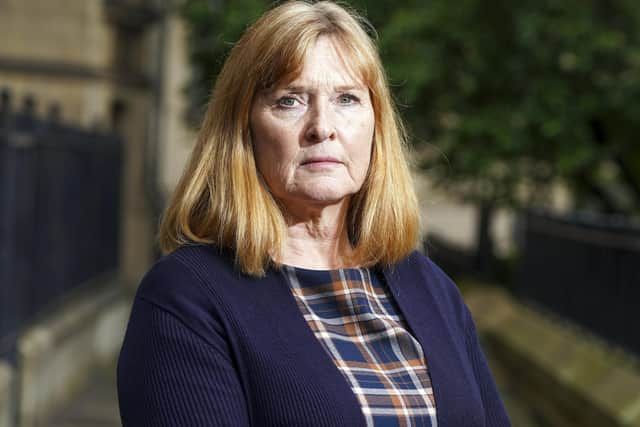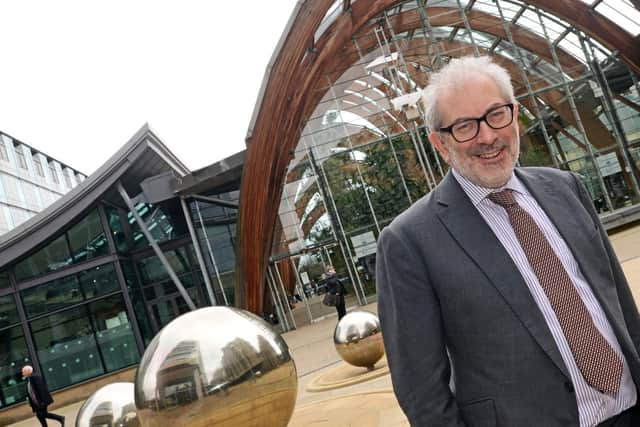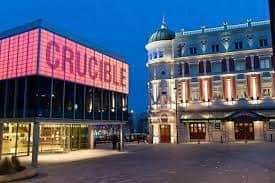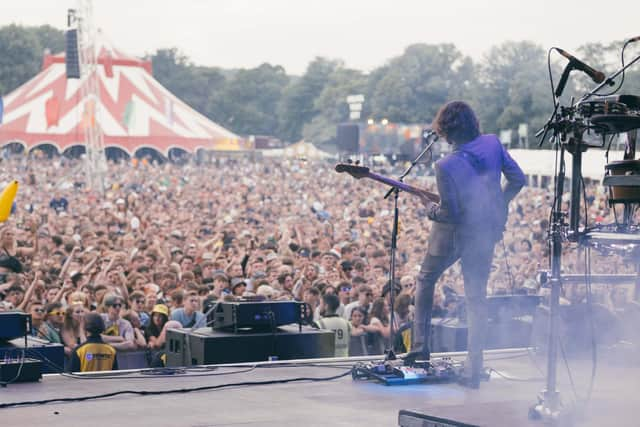Sheffield starved of arts funding while Leeds and Manchester hoover up more than four times as much in grant money
This article contains affiliate links. We may earn a small commission on items purchased through this article, but that does not affect our editorial judgement.
and live on Freeview channel 276
The Star has analysed data and can reveal that Sheffield received less than a quarter of the Arts Council England funding that was awarded to nearby big cities Leeds and Manchester.
And in the case of Manchester, Sheffield was awarded far less despite having a larger population.
Advertisement
Hide AdAdvertisement
Hide AdSince the 2017/2018 financial year, Sheffield received £37,833,327 in arts council grants for its population of 584,028.


In the same time period, Leeds, with its population of 792,525, received £132,308,482 in arts council grants.
Just over the Pennines in Manchester, where the population stands at 553,230, grant money to the value of £152,020,599 was awarded between 2017/18 and 2020/21.
Councillor Julie Grocutt, Deputy Leader of Sheffield City Council and Executive Member for Community Engagement and Governance, has outlined a strategy that is in place in the city to which aims to tackle the inequality in Arts Council funding that is awarded to Sheffield compared to Leeds, Manchester and Liverpool.
Advertisement
Hide AdAdvertisement
Hide AdShe said: “We believe that Sheffield punches above its weight with a thriving grass-roots cultural scene and nationally-significant cultural organisations including Sheffield Theatres – Regional Theatre of the Year four times, leading Chamber Music promoter Music in the Round and Sheffield Museums, now with six sites across the city.


“Sheffield City Council is a member of the Sheffield Culture Collective; a partnership board made up of public, private and voluntary organisations, set up in 2019 in response to the recommendations of the Core Cities’ Cultural Cities Enquiry 2019.
“The collective aims to establish city-wide plans to bring in higher levels of investment, make best use of cultural property assets and attract a full range of diverse talent. The Sheffield Culture Collective has been supported by seed funding from Arts Council England. In June 2021, the Collective launched its first strategy.
“A key message in the strategy is a recognition of the sustained and significantly lower level of national investment in arts and culture per head of the population in Sheffield (£9.50) compared to neighbouring Core Cities: Manchester (£48.62), Leeds (£34.21) and Liverpool (£22.53) (2018/19 figures).
Advertisement
Hide AdAdvertisement
Hide Ad“Despite these reduced levels of public investment, the culture, arts and heritage sector is a key economic driver for the region, making a direct and indirect contribution to the South Yorkshire economy of £200 million and 6,400 jobs per annum. In 2020, Arts Catalyst, an Arts Council England National Portfolio Organisation (NPO), previously based in London, relocated to Sheffield to join 10 other NPOs already based in the city.


“We are keen to strengthen relationships with major funders to redress the geographical imbalance in funding and enable further development of Sheffield’s cultural infrastructure and are working with partners in the Culture Collective to do just that.”
When approached by The Star, Sheffield Culture Collective, which campaigns on behalf of the cultural sector in the city, highlighted ‘an historic discrepancy of significant proportions’ in Arts Council funding for Sheffield compared to other big cities.
Lord Bob Kerslake, the new chairman of the Sheffield Culture Collective, said: “Arts Council England have played a pivotal role in keeping our cultural institutions in city alive during the pandemic through the vital funding that they have provided from the Cultural Recovery Fund.
Advertisement
Hide AdAdvertisement
Hide Ad“As we are hopefully now moving out of the worst of Covid, we need to reflect on the underlying inequalities that exist on the funding of culture, arts and heritage. There is a stark funding divide between London and the rest of the country and Sheffield does much less well than other major cities in the north.


“The good news is that thanks to the work of the Culture Collective under Julie Kenny’s leadership, we now have a clear and exciting Culture Strategy for the city on which we can build. We now need to make a determined effort together to bring in greater investment in to Sheffield and tackle this unfairness.”
The figure also show that discrepancy in Arts Council funding between the north and the south is even greater that that between northern cities.
For example, while London has approximately fifteen times the population of Sheffield, it receives more than 30 times the amount of money every year.
Advertisement
Hide AdAdvertisement
Hide AdLondon receives more than three times the funding that Yorkshire and the Humber as a whole gets, despite have less than double the population.
This is based on data showing the total amount of money received from Arts Council England by London’s 33 boroughs, and Yorkshire and the Humber’s 21, in the years since 2017.
The Arts Council data includes normal lottery funding as well as grants made under the Culture Recovery Fund to help the sector survive the pandemic.
Yorkshire and the Humber’s regions received a total of £330,955,370 for its population of around 5.5 million.
Advertisement
Hide AdAdvertisement
Hide AdLondon, with its population of 8.9 million, received grants worth £1,199,155,609 in the same period. This data includes the City of London.
The arts council budget for the whole of England between 2017/18 and 2020/21 was £3,481,301,004, meaning London’s boroughs received around 34 per cent of the entire nation’s arts council funding.
And of the top 10 local authorities in the country in terms of Arts Council funding per head of the population since 2017/18, eight are in London.
Sheffield received the 59th highest amount of funding per head in England during that period. And as well as receiving significantly less grant funding than London, Manchester and Leeds, it is also behind other big cities including Newcastle, Liverpool, Nottingham and Birmingham.
Advertisement
Hide AdAdvertisement
Hide AdOn a national level, critics have highlighted the London-centric approach to arts funding, and stressed that ‘culture cannot just be the preserve of London and other big cities.’
Jonathan Webb, senior research fellow at think tank IPPR North said: “The North has made a huge contribution to culture, and culture has made a big contribution to the North. From the Beatles to the Angel of the North, the Baltic Centre in Gateshead to the Yorkshire Sculpture Park, there’s no shortage of incredible history and activity to be proud of.
“Northern culture is just as crucial for our society and economy as infrastructure. Not only does it support jobs, but it genuinely enriches communities in a way that nothing else can.
“National World’s data shows that overwhelmingly, investment in the arts is concentrated in London. Outside of the capital, it remains concentrated in cities, with towns receiving less cultural investment. This prevents them from developing new projects to support local culture and exacerbates divides between towns and cities.
Advertisement
Hide AdAdvertisement
Hide Ad“Culture cannot just be the preserve of London and other big cities. It’s something everyone should have access too. Empowering local places with the resources and decision-making powers they need to attract new funding is vital. At the same time, major funding bodies need to do more to promote the growth of the cultural sector outside of major cities. This will be crucial for sharing the benefits more widely”.
An Arts Council England spokesperson said: “Arts Council England are committed to funding organisations of all sizes right across the country, in both rural and urban areas.
“As an example of our commitment, our Creative People and Places programme focuses on parts of the country where involvement in arts and culture is significantly below the national average. We believe that everyone has the right to experience and be inspired by art, so we want to transform the opportunities open to people in those places.
"All assessment process of our funding programmes are designed to include balancing that takes into account geography of applications, if required.”
Advertisement
Hide AdAdvertisement
Hide Ad“Our National Portfolio Organisation (NPO) rounds for 2018-22 saw a 4.6 per cent increase in the proportion of the NPO budget spent outside London (an increase of £37 million per annum) compared to our 2015-18 cohort, with 75 per cent of our Lottery budget invested outside of the capital.
“Similarly, more than 70 per cent of funding awarded by the Arts Council in the Government’s Culture Recovery Fund awards were to organisations outside the capital.
“London, and other major cities, are also home to some of our largest organisations, whose reach – through touring for example – extend far beyond their immediate postcode. These organisations are critical to our cultural infrastructure, employing thousands of staff and freelance workers, and they help to bring culture to those parts of the country where these frameworks are still being developed.”
Comment Guidelines
National World encourages reader discussion on our stories. User feedback, insights and back-and-forth exchanges add a rich layer of context to reporting. Please review our Community Guidelines before commenting.